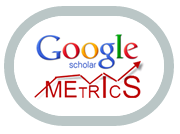FORMING A MODEL OF INNOVATION ACTIVITIES OF THE AGRO-INDUSTRIAL COMPLEX AS THE BASIS FOR ITS SUSTAINABLE DEVELOPMENT
Resumo
Objective: The study considers a model for the sustainable development of innovation activity in the integrated structures of the agro-industrial complex to overcome low rates of innovation activity in Russia. Methods: To achieve this objective, the authors analyze the sources of information and study the current state of innovation. They develop a model for the sustainable development of innovation activity in the integrated structures of the agro-industrial complex, including seven consecutive blocks: initialization, marketing, production (sales), promotion, evaluation, and diffusion of innovations. Results: Each block of the model is embedded in an automated structure, which ensures the accuracy and efficiency of innovation processes. A system of indicators is also introduced to assess the development of innovation activity in agribusiness. Conclusion: The conducted research allows the authors to conclude that it is necessary to apply the model of sustainable development of innovation activity in the integrated structures of the agro-industrial complex to increase the indicators of innovative development in Russia. An automated structure embedded in each block of the model ensures the accuracy and efficiency of innovation processes, speeds up their implementation, and increases efficiency. The system of indicators is used to assess the current development of innovation activity in the agro-industrial complex and serves as an important tool for monitoring and managing this process.
Palavras-chave
Texto completo:
PDFReferências
Aerni, P., Nichterlein, K., Rudgard, S., & Sonnino, A. (2015). Making agricultural innovation systems (AIS) work for development in tropical countries. Sustainability, 7(1), 831-850. https://doi.org/10.3390/su7010831
Becker, T. (2000). Herkunft, Qualitat und Marketing [Origin, quality and marketing]. Agrarwirtschaft, 49(12), 397-399.
Bennett, E., Carpenter, S., Gordon, L., Ramankutty, N., Balvanera, P., Campbell, B., Cramer, W., Foley, J., Folke, C., Karlberg, L., Liu, J., Lotze-Campen, H., Mueller, N., Peterson, G., Polasky, S., Rockström, J, Scholes, R., & Spierenburg, M. (2014). Toward a more resilient agriculture. Solutions Journal, 5(5), 65-75.
Bigg, T. (Ed.) (2004). Survival for a small planet: The sustainable development agenda. London; Sterling, VA: Earthscan Publications.
Bogachev, A.I. (2019). Innovative activity in agriculture of Russia: Current trends and challenges. Bulletin of the NGIEI, 5(96), 95-106.
Chepurnykh, N.V., Merzlov, A.V., & Antipov, A.N. (2000). Sustainable rural development in Russia. Concept and recommendations. Irkutsk: Publishing House of IG SB RAS, 82 p.
Denisov, V.T., Medvedeva, Yu.P., Denisov, D.D., & Reznik, A.E. (2010). The essence of efficiency and its increase. Volga Trade and Economic Journal, 3, 6-13.
Dutta, S., Lanvin, B., Rivera León, L., & Wunsch-Vincent, S. (Eds.). (2022). Global Innovation Index 2022. What is the future of innovation-driven growth? Geneva: World Intellectual Property Organization. Retrieved from https://www.globalinnovationindex.org/Home
Elliot, J.A. (1994). Introduction to sustainable development. London: Routledge.
Federal State Statistics Service. (n.d.). Retrieved from https://rosstat.gov.ru/
Gardašević, J., Brkić, I., & Krstić, T. (2020). Innovations in agricultural and wine production sector Journal of Agronomy, Technology and Engineering Management, 3(4), 448-454.
Klerkx, L., & Rose, D. (2020). Dealing with the game-changing technologies of Agriculture 4.0: How do we manage diversity and responsibility in food system transition pathways? Global Food Security, 24, 100347. http://dx.doi.org/10.1016/j.gfs.2019.100347
Kosolapova, V.M., & Svobodin, V.A. (2018). Complex economic analysis of economic activity: Textbook. Moscow: Dashkov and K., 248 p.
Meskon, M., Albert, M., & Khedouri, F. (1997). Fundamentals of management (Management). Moscow: Delo, 704 p.
North, D. (2010). Understanding the process of economic changes. Transl. from English by K. Martynov, & N. Edelman. Moscow: Publishing House of State University of Higher School of Economics, 256 p.
Pareto, V. (2023). Uchebnik politicheskoi ekonomii [Textbook of political economy]. Transl. from French. Introduction by V.S. Avtonomov. 2nd ed. Moscow: RIOR: INFRA-M, 592 p.
Pigford, A.-A.E., Hickey, G.M., & Klerkx, L. (2018). Beyond agricultural innovation systems? Exploring an agricultural innovation ecosystems approach for niche design and development in sustainability transitions. Agricultural Systems, 164, 116-121. http://dx.doi.org/10.1016/j.agsy.2018.04.007
Schumpeter, J.A. (1982). Theory of economic development. Transl. from German. Moscow: Progress.
Sukharev, O.S. (2008). Towards a new theory of economic efficiency. Investments in Russia, 11(166), 9-17.
Thomson, A. (1998). Economics of the firm: Manual. Moscow: BINOM, 544 p.
United Nations. (2004). The global compact. Who cares wins. Connecting financial markets to a changing world. Recommendations by the financial industry to better integrate environmental, social and governance issues in analysis, asset management and securities brokerage. Retrieved from https://documents1.worldbank.org/curated/en/280911488968799581/pdf/113237-WP-WhoCaresWins-2004.pdf
Vernadskii, V.I. (2012). Biosfera i noosfera [Biosphere and noosphere]. Moscow: Airis-press, 576 p.
World Commission Environment and Development. (1987). Our common future. Oxford; New York: Oxford University Press, 383 p.
DOI: http://dx.doi.org/10.21902/Revrima.v4i42.6546
Apontamentos
- Não há apontamentos.
Revista Relações Internacionais do Mundo Atual e-ISSN: 2316-2880
Rua Chile, 1678, Rebouças, Curitiba/PR (Brasil). CEP 80.220-181



